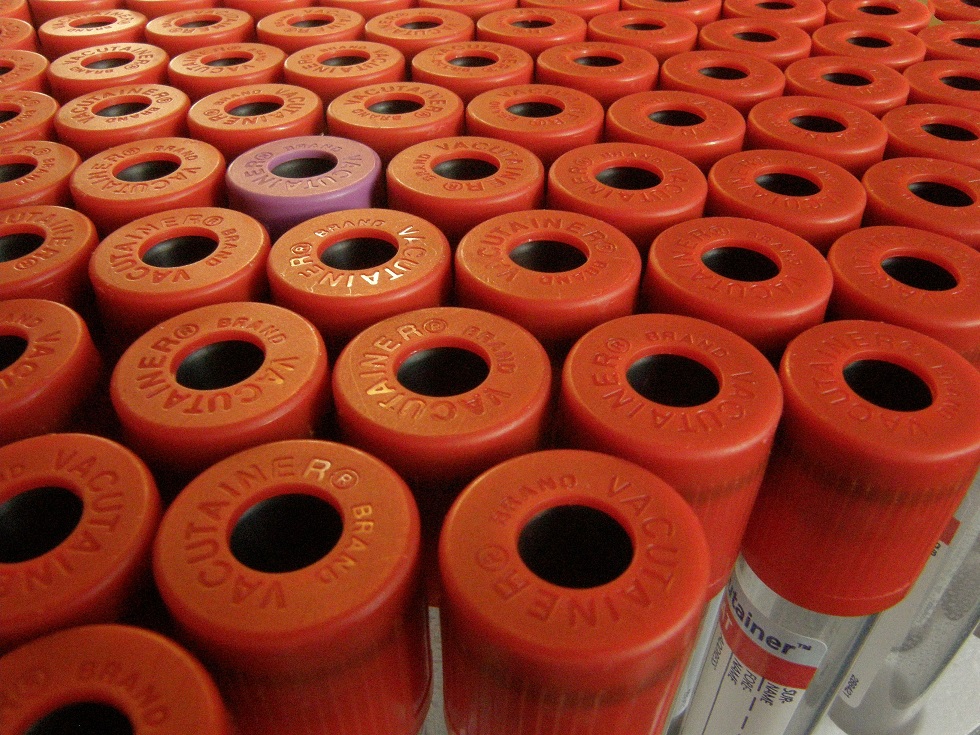Species: Canine, equine, alpaca
Specimen: Serum
Container: Plain (red top) or gel tube
Collection protocol: Standard venepuncture
Special handling/shipping requirements: Separate the serum and transport to the laboratory within 12-24 hrs.
General information about the disease: N/A
Testing to identify cryptorchid animals:
CANINE:
Testosterone level in intact dogs will vary substantially throughout the day. Measurement of a single baseline testosterone can therefore sometimes give equivocal results. Results greater than 1.0 nmol/L are generally consistent with the presence of testicular tissue (intact or cryptorchid).
A HCG stimulation test can be used to increase the chances of a meaningful testosterone result. A protocol for this test is as follows:
- Take a baseline blood sample.
- Inject GnRH at 2 ug/kg or 50 ug for larger dogs
- Collect a blood sample after 60 minutes.
- There should be a 2-3 fold increase in testosterone above baseline, and no response in a castrate.
The test can also be performed in cats:
- Take a baseline blood sample.
- Inject 500 IU HCG IV
- Collect a blood sample after between 30 and 120 minutes.
- There should be a 2-3 fold increase in testosterone above baseline, and no response in a castrate.
EQUINE:
Testosterone concentrations in the stallion vary with season, with a mean of 3 nmol/l in the non-breeding season rising to 12 nmol/L at the height of the breeding season. Geldings have low or undetectable concentrations (<0.19 nmol/L) of testosterone. A cryptorchid is likely if the serum testosterone concentration is greater than 0.30 nmol/L.
Baseline testosterone concentrations are not significantly different between stallions and unilateral cryptorchid horses. Bilaterally cryptorchid horses have a lower baseline testosterone concentration and most commercially available assays are not sensitive enough to detect these low levels. A single serum testosterone test is therefore NOT recommended for diagnosing cryptorchidism.
The equine testis produces ten times the quantity of oestrogen compared with testosterone and it is therefore much easier to differentiate a cryptorchid from a gelding by measuring serum oestrone sulphate. This test is not recommended in horses less than 3 years of age and donkeys.
Younger animals require a stimulation test. A protocol for this test is as follows:
- Take a baseline blood sample.
- Inject 6000 IU HCG IB
- Collect blood between 30 minutes ad 2 hours after HCG
- A true cryptorchid should show an increase in testosterone from 0.3 – 4.3 nmol/L to 1 – 12.9 nmol/L. Castrated horses should remain below 0.19 nmol/L.
ALPACAS AND LLAMAS:
A single testosterone measurement is often all that is required. If equivocal results are found, then an HCG stimulation test can be used. For this test, serum testosterone concentrations are measured in two blood samples collected before and 18 hours after IM administration of 5000 IU HCG. NB: Alpacas reach sexual maturity at 10-12 months of age and llamas at 20-24 months.
Comparison with other related tests:
The equine testis produces ten times the quantity of oestrogen compared with testosterone and it is therefore much easier to differentiate a cryptorchid from a gelding by measuring serum oestrone sulphate. Serum AntiMullerian hormone (AMH) assays are now available for identification of cryptorchid dogs, cats, and horses and in some instances can be used in lieu of the stimulation assays. The presence of penile spines can assist in identifying intact male cats as these are testosterone-dependent.
**Note that the testosterone assay is a human assay, which has not been validated in veterinary species. Awanui has not assessed this assay for the purposes described above, and the expected values reported above should be considered rough guidelines. Where possible, consider alternative diagnostics for identification of cryptorchid animals.

